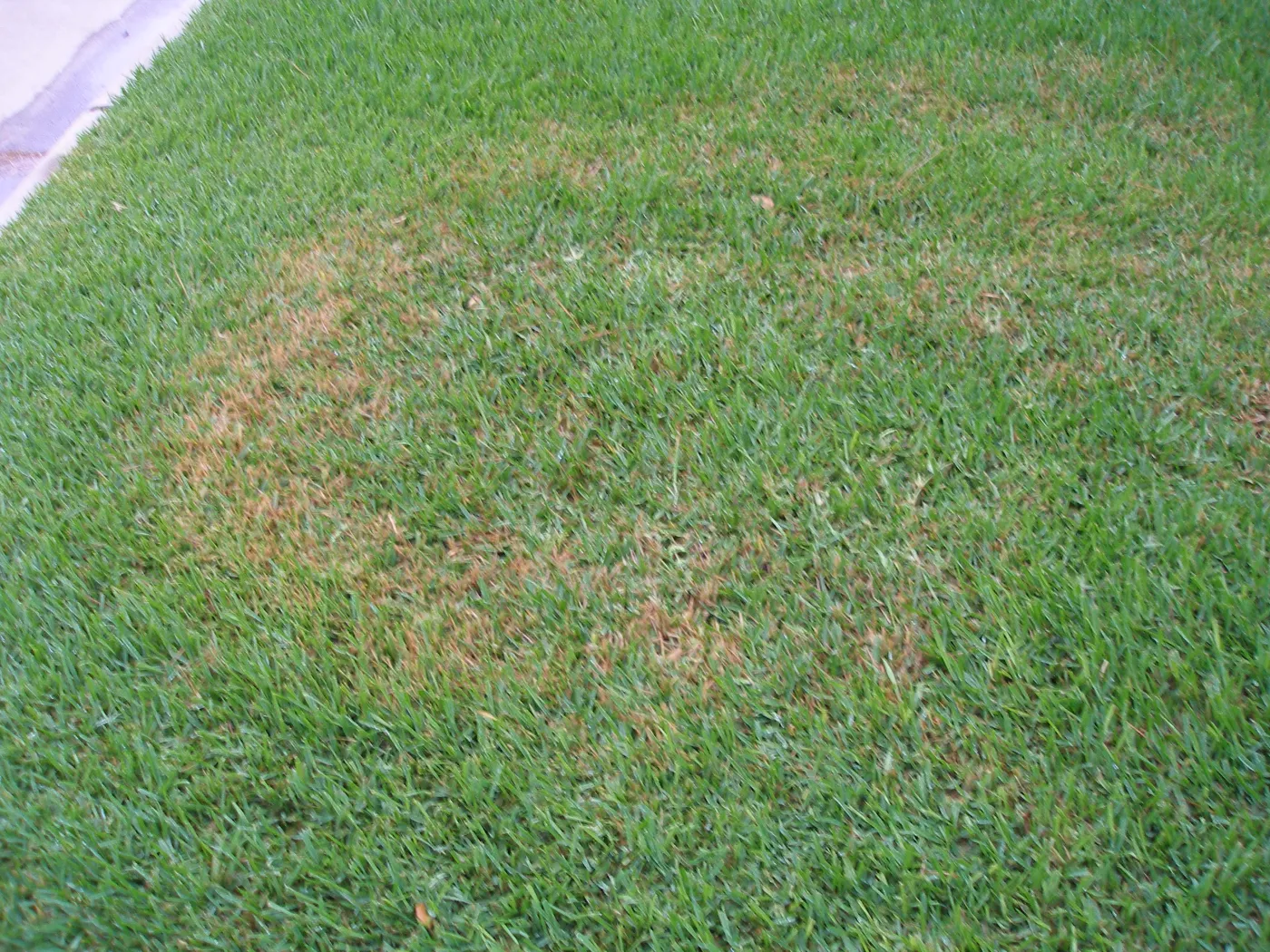Turf diseases are not usually as common a threat to a Gainesville lawns as Turf pests and weeds, but they are still a concern in certain seasons. Occasionally an outbreak will occur after an extended period of heat and humidity but for the most part, a lawn will remain relatively disease free as long as it is irrigated properly.
However, if there is a dead or dying spot on your lawn, it is beneficial to know if it might be a disease or simply your neighbor taking the dog to its favorite spot in your Gainesville yard. Identifying a lawn disease will also give you clues as to what is causing its presence and if there is anything you can do about it.
5 Common Lawn Diseases
There are numerous diseases that can creep up into your lawn if the proper conditions are present. Five of the popular turf fingii include:
- Large Patch Fungus - Previously termed as 'Brown patch fungus' appears as circular patches in the lawn that are brownish yellow in color and range from 6 inches to several feet in diameter. It effects most all Gainesville grass, but is especially harmful to St. Augustine grass and Zoysia grass. Brown patch is most likely to occur during extended periods of heat, humidity, and rain - which is common in our Gainesville, Florida summer and fall seasons. The most effective treatment is with targeted fungicides and withholding nitrogen (lawn fertilization) to keep it from spreading.
- Grey Leaf Spot - Grey leaf spot looks like brown patch fungus at first, but it attacks the tops of the leaf, leaving tiny olive-to-brown oblong spots, which may have velvet growths in their centers. As the disease progresses, the oblong spots become oval or an irregular shape.Grey leaf reduces the ability of the grass to thrive, making it sparse and spindly. It most often occurs from early spring to early fall when the humidity is high and rainfall is heavy (or you’ve over-watered). The moist Gainesville climate allows spores to produce with abundance.
- Dollar Spot Fungus - Dollar spot appears in a pattern of brown circular patches about the size of a silver dollar. A spot by itself doesn’t look too horrible, but don’t let it fool you. Those small patches become very large areas, and dollar spot is merciless. It kills the grass right down to the roots causing a need for new plugs or sod installation.
You can also identify dollar spot by the lesions (infection marks) on the leaves of the grass. They begin as light tan with a reddish-brown border and turn white to straw-colored as the lesions grow into one large leaf blemish. Another clue is when you see mycelium (cobwebs on lawn) early in the dewy morning. Dollar spot starts growing when the humidity is high and temperatures reach higher than 70 degrees.
- Fairy Ring Fungus - In Gainesville yards (and all over Florida for that matter), fairy rings appear annually in the same spot. You’ll see 3-foot to 20-foot rings of dark green or dead grass, most often in hot weather and heavy rainfalls (noticing a tred between the different diseases). Major yard outbreaks will have mushrooms in a circle or semicircle, but not always.
Fairy ring spreads rapidly along the root system of the grass, depleting the nitrogen that is essential for the life of the grass. It also has a second line of attack. It produces mycelium (a web of fine white threads), which, as it dies, hardens and kills the grass by keeping water from reaching the roots. Fairy ring is kind of sneaky. By the time you see the signs, it’s been in your soil for two to three years. Then, you think you’ve taken care of the problem and it’s back several years later.
There are three types of fairy ring found on lawns, those with a darker green flush of growth, a zone of dying grass and mushrooms, those with only a darkened green ring and mushrooms, and those with only mushrooms. Fairy rings do not cause widespread damage and are very hard to get rid of so they are most often just left alone.
- Rust Fungus - Rust fungus is a yellowish-orange powder that turns your lawn to yellow, orange, red or brown rust-like color. In the beginning stages, leaves develop yellow flecks that get larger and become dark yellow. By then, the flecks are pustules that burst and release spores that are the powder you see. When the turf infection is severe, the leaves will turn rust-colored (hence the name) and growth slows down. As the lawn becomes sparse and individual leaves begin to die, it becomes very hard to mistake for other yard problems. However it presents itself, the primary danger is that your lawn is susceptible to more lethal lawn diseases.
Rust attacks grass that is in the shade and stays saturated with water from rain, dew, humidity or due to your watering it too often. Be on the lookout from early spring to fall when temperatures are between 60-85 degrees, particularly if your grass is growing more slowly than usual.
Your TMLC Gainesville lawn experts are trained to determine what is ailing your lawn and if a lawn fungus treatment is really what you need. We can provide valuable advice on how to treat Gainesville turf disease as well as give tips for proper mowing and watering. In addition, the ongoing support they offer can greatly reduce the likelihood of lawn damaging insects or diseases reappearing in your lawn and will fortify your lawn fungus control. Fill out the form above or call (352) 378-LAWN today for more information.
Other Topics of Interest:


